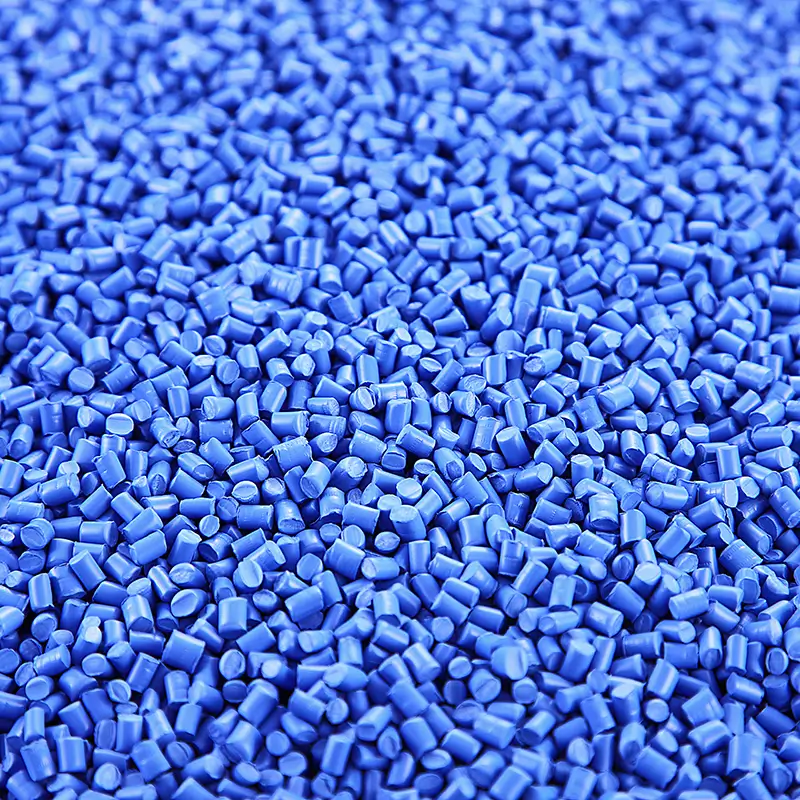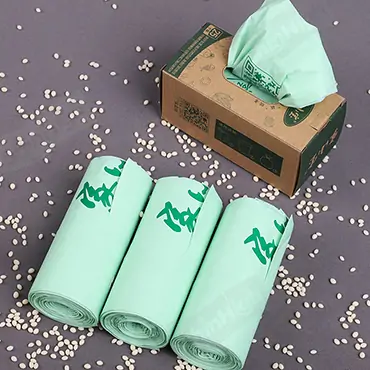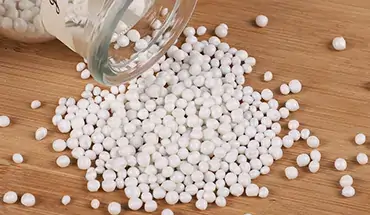Introduction
Traditional plastic masterbatches have been the industry standard for decades, providing color, fillers, and other functional additives to plastic products. However, as environmental issues become more severe and regulatory pressure increases, there’s a rising demand for sustainable alternatives. Compostable masterbatches offer a promising solution that provides the same functionality as traditional ones while being environmentally friendly.
Compostable masterbatch compounds are designed to decompose into organic matter in composting environments, without giving rise to plastic waste in landfills.
Therefore, these sustainable plastic compounds are gradually becoming an eco-friendly alternative to traditional plastic masterbatches in the plastics manufacturing industry.
Composition of Compostable Masterbatches
The composition of Compostable masterbatches is made up of carrier resin polymers, additives and pigments.
Base Polymers:
The base composition of the masterbatch is biodegradable polymers, like PLA, PBAT, and PBS. Sometimes, they will be blended with starch and cellulose additives to accelerate the biodegradation process by providing a food source for microorganisms.
Additives:
To enhance the properties of the plastic masterbatch, producers would add some additives, like colorants, fillers, processing aids and biodegradation enhancers. Both the colorants and fillers utilize organic and inorganic matter. The processing aids are fed into the mixture to improve melt flow and processability. To accelerate the breakdown process of the finished products, most producers will add some biodegradation enhancers.
Manufacturing Process of Compostable Masterbatches
Material Preparation:
-
Drying of polymers and additives
Polymers and additives are meticulously dried to reduce moisture content. This crucial step ensures optimal processing conditions, preventing potential issues like hydrolysis and degradation.
-
Milling of fillers and colorants
Fillers and colorants are finely milled to achieve the desired particle size. This process enhances dispersion within the polymer matrix, resulting in improved color consistency and performance.
Extrusion:
-
Melting and mixing
The dried polymers, additives, fillers, and colorants are fed into a twin-screw extruder. The high temperatures and mechanical shear forces within the extruder melt the components and initiate the mixing process.
-
Homogenization and dispersion of additives
The extruder’s intensive mixing action ensures a uniform distribution of additives throughout the polymer melt. This prevents phase separation, agglomeration, and color streaking in the final product.
Pelletization:
The homogenized melt is extruded via a die and segmented into pellets of the requisite size. Subsequently, the pellets are promptly cooled to solidify and maintain their shape. The chilled pellets are desiccated to eliminate any remaining moisture, thereby further enhancing their stability and storage duration.
Quality Control:
-
Physical and chemical testing
Rigorous quality control measures are implemented throughout the manufacturing process. Physical properties such as melt flow rate, density, and tensile strength are assessed, along with chemical properties like thermal stability and biodegradability.
-
Color measurement
Color consistency is ensured through precise color measurement techniques. Spectrophotometers are used to accurately determine color values and identify any deviations from the target specifications.
The finished compostable masterbatch pellets are versatile materials that can be incorporated into various plastic products, contributing to a more sustainable and environmentally friendly future.
Functions of Compostable Masterbatches
Compostable masterbatches are versatile materials that serve multiple functions in plastic product manufacturing. They are typically categorized into three primary groups:
Filler Masterbatches:
- Cost reduction: By incorporating fillers like calcium carbonate or wood flour, filler masterbatches can reduce the overall material cost of the final product.
- Enhanced mechanical properties: Fillers can significantly improve the mechanical properties of plastics, such as stiffness, impact strength, and tensile strength. This is particularly beneficial for applications requiring robust and durable materials.
- Improved thermal stability: Fillers can enhance the thermal stability of plastics, allowing them to withstand higher temperatures without degradation. This is crucial for products exposed to heat, such as those used in automotive or electronics applications.
Color Masterbatches:
- Coloration: Color masterbatches provide a wide range of colors to plastic products, enabling customization and aesthetic appeal.
- Color consistency: These masterbatches ensure consistent color throughout the product, preventing variations and improving the overall appearance.
- UV protection: Certain color masterbatches contain UV stabilizers that protect the plastic from degradation caused by exposure to sunlight. This is essential for outdoor applications where products are subjected to harsh weather conditions.
Additive Masterbatches:
- Improved processability: Additive masterbatches can enhance the processing characteristics of plastics, such as melt flow and lubricity. This leads to smoother and more efficient production processes.
- Enhanced product performance: Additives can impart specific properties to plastic products, including flame retardancy, antimicrobial properties, and antioxidant properties. These properties are crucial for applications with stringent safety and performance requirements.
By carefully selecting and combining different types of masterbatches, manufacturers can tailor the properties of their plastic products to meet specific needs, while also contributing to a more sustainable future.
The Imperative for Compostable Masterbatches
The escalating global plastic pollution crisis has ignited a pressing need for sustainable solutions. Compostable masterbatches offer a promising avenue to address this challenge while maintaining product performance and quality.
Environmental Benefits:
- Reduced plastic pollution: By incorporating compostable masterbatches into plastic products, manufacturers can significantly reduce the amount of plastic waste entering landfills and oceans.
- Conservation of natural resources: Compostable materials are derived from renewable resources, such as plant-based polymers. This helps to conserve finite fossil fuel resources and reduce the environmental impact of plastic production.
- Mitigated climate change: The production and disposal of conventional plastics contribute to greenhouse gas emissions. Compostable materials, on the other hand, have a lower carbon footprint and can help mitigate climate change.
Product Performance:
- Comparable properties: Modern compostable masterbatches are engineered to deliver performance characteristics comparable to traditional plastic materials. This ensures that products made with these masterbatches maintain their durability, strength, and functionality
- Biodegradability and compostability: The key advantage of compostable masterbatches is their ability to biodegrade and compost in specific environmental conditions. This means that they can break down into harmless substances, such as water, carbon dioxide, and biomass, without leaving behind persistent plastic waste.
Regulatory and Consumer Demand:
- Stricter regulations: Governments worldwide are enacting increasingly stringent regulations to curb plastic pollution. Compostable materials offer a viable solution to comply with these regulations and avoid penalties.
- Growing consumer awareness: Consumers are becoming more environmentally conscious and are seeking sustainable products. Compostable masterbatches can help manufacturers meet this growing demand and differentiate their products in the market.
Applications of Compostable Masterbatches
Packaging:
- Flexible films: Compostable films can be used for packaging food products, such as snacks, coffee, and tea. They offer a biodegradable alternative to traditional plastic films.
- Rigid containers: Compostable masterbatches can be used to create rigid containers for food and non-food products. These containers can replace conventional plastic containers, reducing plastic waste.
Agriculture:
- Mulch films: Compostable mulch films help retain soil moisture, suppress weed growth, and improve soil quality. They biodegrade at the end of the growing season, eliminating the need for plastic removal.
- Plant pots: Compostable plant pots provide a sustainable alternative to traditional plastic pots. They can be planted directly into the ground, reducing waste and minimizing environmental impact.
Consumer Goods:
- Cutlery: Compostable cutlery, such as forks, knives, and spoons, is a popular choice for eco-conscious consumers. It offers a biodegradable alternative to single-use plastic cutlery.
- Food packaging: Compostable food packaging, including trays and containers, can be used for various food products. It helps reduce plastic waste and promotes sustainable consumption.
Automotive:
- Interior components: Compostable masterbatches can be used to create interior components like seat covers, door panels, and headliners. This can reduce the environmental impact of automotive manufacturing and end-of-life vehicle disposal.

Challenges and Opportunities for Compostable Masterbatches
While compostable masterbatches offer significant benefits, there are still challenges to overcome:
Challenges:
- Higher cost: Compared to conventional plastics, compostable materials can be more expensive to produce. However, as the technology matures and economies of scale increase, costs are expected to decrease.
- Limited infrastructure: The availability of industrial composting facilities is limited in many regions. This can hinder the effective disposal and recycling of compostable products.
- Technical limitations: Achieving the same level of performance as traditional plastics, particularly in terms of strength, durability, and flexibility, can be challenging with biodegradable materials. Ongoing research and development are focused on overcoming these technical hurdles.
Opportunities:
- Expanding market: The global market for sustainable products, including compostable plastics, is rapidly growing due to increasing consumer awareness and stricter environmental regulations.
- Technological advancements: Continuous innovation in materials science and processing technologies is leading to the development of more advanced compostable materials with improved properties.
- New applications: As technology progresses, compostable masterbatches can be used in a wider range of applications, including packaging, agriculture, and consumer goods.
By addressing these challenges and capitalizing on the opportunities, compostable masterbatches can play a significant role in transitioning to a more sustainable future.
ShinHigh Bio Compostable Masterbatch
For a long time, the masterbatches used by ShinHigh Bio have been purchased from several masterbatch manufacturers. However, we faced a problem: the color masterbatch purchased did not fit well with the raw material resin produced by ourselves, resulting in defects in the performance of the final packaging bag products. Later, we decided to independently develop suitable compostable masterbatches and successfully carried out technological innovation.
Highlights of ShinHigh Bio Compostable Masterbatch:
- Composed of PBAT resins, dispersants and organic pigments.
- Devoted to blown film
- Vivid color and outstanding tinting strength
- Good dispersion with less dispersant
- Low water content
- Excellent liquidity to protect the screw and reduce losses
- Home compostable
- Customizable
- Factory wholesale price
By choosing compostable masterbatch, your plastic product manufacturing can achieve outstanding properties while contributing to a cleaner and more sustainable future.
If you are interested in our compostable masterbatch, don’t hesitate to get in touch with us for inquiries.











